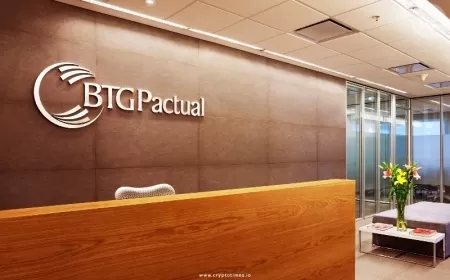Don't Forget Your Quarterly Tax Payments: Penalties Can Be Costly
Don't miss your quarterly tax payments! Avoid penalties by staying on top of estimated taxes. Learn how to calculate and pay your taxes on time.

Tax penalties for missing estimated payments have gone up a lot for many Americans. Self-employed folks especially need to stay on top of their taxes.
Why Quarterly Tax Payments Matter
If your job doesn't withhold taxes from your paycheck, you need to pay estimated taxes to the IRS every quarter. The latest deadline was this past week.
Figuring out your yearly tax bill can be tricky, especially if your income changes a lot. But paying quarterly taxes is mandatory, and putting it off can lead to big penalties. This year, the penalty for not paying enough has gone up.
"The US tax system requires you to pay taxes as you earn money," said Kathy Pickering from H&R Block. "People who make money from gigs or investments might not realize they need to pay taxes on that money throughout the year, not just at tax time."
You can avoid the "Underpayment of Estimated Tax Penalty" if you owe less than $1,000 when you file your return or if you paid 90% of this year's tax or 100% of last year's tax, said Pickering.
Higher Interest Rates on Unpaid Taxes
If you don't pay enough in estimated taxes, you'll be charged interest on the unpaid amount. The IRS updates this rate every quarter. It's currently 8%, up from 3% two years ago. This rate is based on the federal short-term rate plus three percentage points.
In 2023, the average estimated-tax penalty jumped to about $500 from around $150 in 2022, according to the latest IRS Data Book. The number of people paying this penalty rose to 14 million from 12 million. The IRS collected $7 billion in estimated-tax penalties in 2023, compared to $1.8 billion in 2022.
H&R Block has seen more clients facing penalties. One reason is that the IRS stopped sending automated reminders to pay overdue tax bills in 2022 due to the pandemic. The IRS started sending these reminders again at the beginning of this year.
"Figuring out your taxes can be tough, but the government wants their money on time," said Russell Garofalo, founder of Brass Taxes, a firm that helps freelancers and self-employed people. "That's why we have estimated tax payments."
How Interest on Unpaid Taxes Works
Interest on the amount you owe adds up every day. So, even if you miss a quarterly payment, paying something as soon as you can will help reduce the penalty.
"Paying estimated taxes as soon as you realize you owe more is very helpful," said IRS spokesman Eric Smith. "It can lower or even eliminate the penalty."
Garofalo noted that it's hard to explain all the details of these rules. "Some people really want to avoid paying another $200 in penalties, while others think it's a small price to pay for not worrying about taxes during the year."
You have to pay taxes as you earn money, either through withholding or estimated payments. This isn't just for self-employed workers; it also applies to anyone making money from things like interest, dividends, alimony, capital gains, or prizes.
Retirees with pensions, IRA withdrawals, or Social Security usually have taxes withheld already. For more details, check out IRS Publication 505.
How to Estimate Your Tax Payments
If your income is steady, you can estimate your yearly tax and pay a quarter of that amount each quarter. Or, you can look at last year's income to help guide your quarterly payments. Your previous year's tax return can help figure out what you'll owe by April 15 and how much to pay each quarter.
If your state has an income tax, you’ll need to make estimated payments for that too. Some cities, like New York City, also require estimated payments.
There's still time to make sure you’ve paid enough through withholding or estimated tax payments, Smith said.
Getting Help
For self-employed individuals, the IRS Self-Employed Individuals Tax Center can help you understand federal taxes. Depending on where you live, you might also need to file state and local taxes.
Form 1040-ES includes a worksheet to calculate your estimated tax payments. The IRS Tax Withholding Estimator can help you figure out how much to set aside. You can also set up automatic payments with the IRS to avoid missing due dates. Electronic filers can schedule all four quarterly payments at once.
For those with a side gig or retirement plan withdrawals, increasing withholding on a W-2 job or retirement payout can cover other income.
Ignoring quarterly tax payments is the worst option. "Some people think missing the estimated tax deadline means they should just wait until the end of the year to pay," Smith said. "That's not a good idea."
Also Read: Federal Reserve Faces Intensifying Debate Over Interest Rates





























































